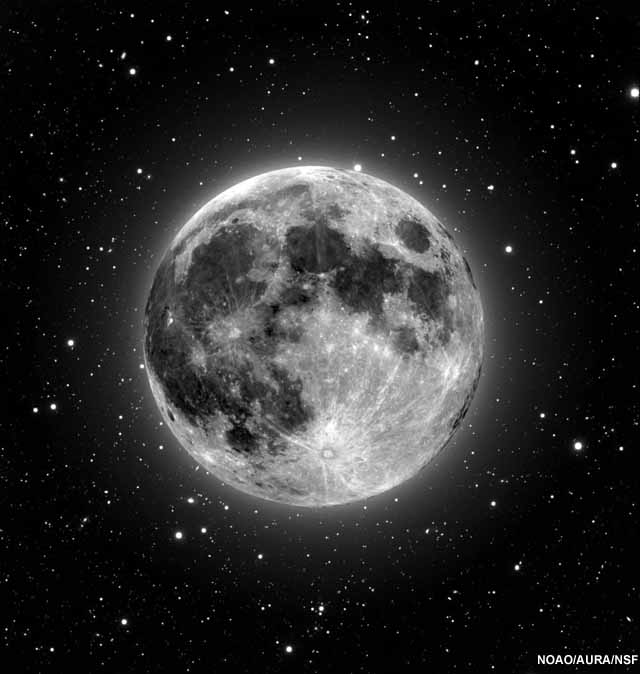Biggest and Brightest Full Moon of 2010 Tonight

Tonight's full moon will be the biggest and brightest full moon of the year. It offers anyone with clear skies an opportunity to identify easy-to-see features on the moon.
This being the first full moon of 2010, it is also known as the wolf moon, a moniker dating back to Native American culture and the notion that hungry wolves howled at the full moon on cold winter nights. Each month brings another full moon name.
But why will this moon be bigger than others? Here's how the moon works:
The moon is, on average, 238,855 miles (384,400 km) from Earth. The moon's orbit around Earth – which causes it to go through all its phases once every 29.5 days – is not a perfect circle, but rather an ellipse. One side of the orbit is 31,070 miles (50,000 km) closer than the other.
So in each orbit, the moon reaches this closest point to us, called perigee. Once or twice a year, perigee coincides with a full moon, as it will tonight, making the moon bigger and brighter than any other full moons during the year.
Tonight it will be about 14 percent wider and 30 percent brighter than lesser full Moons of the year, according to Spaceweather.com.
As a bonus, Mars will be just to the left of the moon tonight. Look for the reddish, star-like object.
Breaking space news, the latest updates on rocket launches, skywatching events and more!
Full moon craziness
Many people think full moons cause strange behavior among animals and even humans. In fact several studies over the years have tried to tie lunar phases to births, heart attacks, deaths, suicides, violence, psychiatric hospital admissions and epileptic seizures, and more. Connections have been inclusive or nonexistent.
The moon does have some odd effects on our planet, and there are oodles of other amazing moon facts and misconceptions:
The moon illusion
Finally, be sure to get out and see the full moon as it rises, right around sunset. Along the horizon, the moon tends to seem even bigger. This is just an illusion.
You can prove to yourself that this is an illusion. Taking a small object such as a pencil eraser, hold it at arm's length, and compare its size to that of the moon just as it rises. Then repeat the experiment later in the night and you'll see that the moon compares the same in both cases. Alternately, snap two photos of the moon, with a digital camera or your cell phone, when the moon is near the horizon and later when it's higher in the sky. Pull both photos up on your computer screen and make a side-by-side comparison.
Astronomers and psychologists agree the moon illusion is just that, but they don't agree on how to explain it.

Rob has been producing internet content since the mid-1990s. He was a writer, editor and Director of Site Operations at Space.com starting in 1999. He served as Managing Editor of LiveScience since its launch in 2004. He then oversaw news operations for the Space.com's then-parent company TechMediaNetwork's growing suite of technology, science and business news sites. Prior to joining the company, Rob was an editor at The Star-Ledger in New Jersey. He has a journalism degree from Humboldt State University in California, is an author and also writes for Medium.
